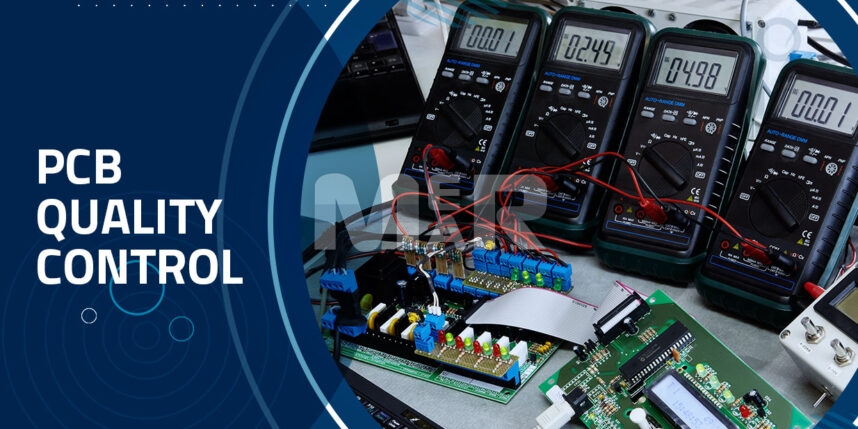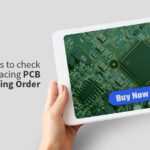How does Printed Circuit Board company ensure PCB quality control Methods?

PCBs have a strong role to play in a wide range of industries powering a host of electronic equipment. In addition, they are also widely use in mission-critical industries such as medical, aerospace and others. In such industries, in particular, failure of the product can turn out to have far-reaching consequences. It is imperative, therefore, that the PCB goes through a host of quality control processes to ensure its seamless working.
Here are the many ways in which a every printed circuit board company makes sure to manufacture the quality PCB.
YOU MAY ALSO LIKE: Debunk These PCB Myths to Meet High-quality PCBs
PCB quality control for component procurement
The right components have a strong role to play in the quality of the PCB. In order to ensure this, the PCB manufacturer undertakes the following processes:
- Validation of BOM
This involves checking for a number of items such as-
- Verification of manufacturer part number
- Verification of component reference designator
- Checking of component manufacturing status
In addition, the other aspects to check for, include:
- MPN-footprint match
- Use of a trustworthy supplier so that the components thus procured are genuine.
- Ensuring that the shipping documents have no errors
- Visual inspection of components to see that they match your order.
- Ascertaining solderability
- Ensuring that the components meet tolerance ranges.
Printed circuit board quality control methods
With these quality control methods, a reputed printed circuit board company ensures that any errors in the PCB are caught early. While this list of tests isn’t exhaustive, it will give you a fair idea of the kind of checks and balances that need to be in place.
Flying Probe Testing
A key component of electrical testing, it makes use of a generic board holder along with probes. It ensures testing for opens & shorts. Flying Probe testing can also perform memory module programming. The fact that it does not require test fixtures & has very little set up time is a big plus in its favor.
Bed of Nails
Also known as an In circuit test fixture, this test comes in handy to check any bad components as well as defects. The test particularly comes in handy in mass production. The big advantage that Bed-of-Nails testing offers is that in identifies specific components that are faulty. It, therefore, goes a long way in improving the efficiency of production as also in reducing maintenance costs.
3D Optical Inspection
Simply put, this is a sophisticated form of visual inspection that makes the use of cameras. The images taken from the camera are then compared with the schematic to determine accuracy. Any discrepancies thus being flagged off it ensures that you do not have to deal with costly errors at a later stage.
Burn-in Testing
It is important to simulate the actual working of a PCB with the requisite stress & load. This is a task that is undertaken by way of burn-in testing. With a burn-in test often power is pushed through a PCB for as many as 168 hours. Burn-in testing thus works very well in determining early failures.
Functional Testing
Similarly, functional testing comes in extremely handy to ensure that there are no issues in powering up of the PCB. The PCB manufacturer can design the test on his own or may follow the specifications shared by the customer.
X-Ray Fluorescence Testing
The European Union Directive on the Restriction of Hazardous Substances (RoHS) holds electrical and electronic equipment (EEE) companies directly responsible for ensuring their products conform to its strict standards and ensure that the products do not contain hazardous substances so notified, above the legal threshold.
This test is therefore important to figure out if any parts contain RoHS substances such as Mercury, Lead, Cadmium and more. In fact, the test focuses mainly on those parts of the product that have the highest risk of containing RoHS substances. Needless to mention that this test is critical to ensure that you do not face any regulatory issues once the product is shipped.
YOU MAY ALSO LIKE: Advantage of RoHS Compliant
PCB Quality Control for Assembly
This stage also involves extensive testing such as:
- Visual inspection to look for issues such as any unattached components, excess solder & more
- X-Ray inspection
- AOI
- Sawing to inspect vias
- ROSE testing to determine the cleanliness of the PCB
- Electrical testing, and more
While it is important that you go with a manufacturer who performs the above tests, in addition to these tests, here are some other things to look for in choosing the right manufacturer who will ensure quality control:
Certifications
It is imperative to look for the fact that the manufacturer is certified by the following bodies:
- Institute for Interconnecting and Packaging Electronic Circuits (IPC).
- International Organization for Standardization (ISO). In fact, ISO compliance is especially important for medical devices.
- FDA Registration. When it comes to medical grade PCBs, an FDA registration also goes a long way in telling you that the manufacturer follows norms with respect to design, production, packaging, maintenance & more.
To sum up
In addition to the above checks, it is also important to figure out if the manufacturer has an internal structure and processes in place that enable them to meet quality standards. One such process is the formation of multi-disciplinary teams that include professionals from different functions who meet periodically to review manufacturing issues as also discuss best practices & trends.
The choice of a professional, reliable printed circuit board company is the first step that you can take toward quality manufacturing. Mermar Electronics is one stop solution for your PCB services. Mermar Electronics is an ISO-9001:2015 AS9100D Certified company since 1999 and provides top-notch PCB services including PCB assembly and PCB fabrication services. Fill out the form below to request a free quote now or mail us at sales@mermarinc.com.








